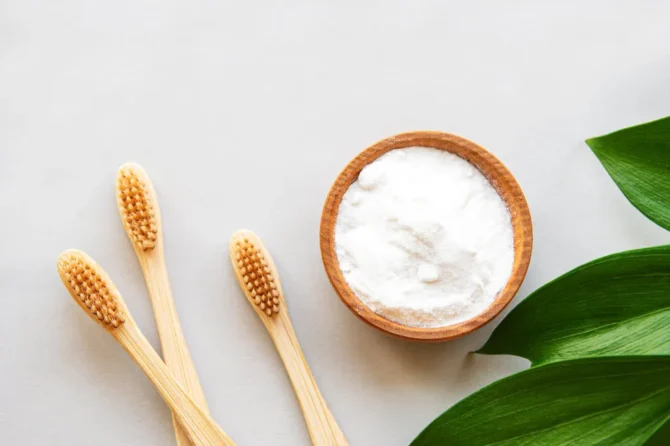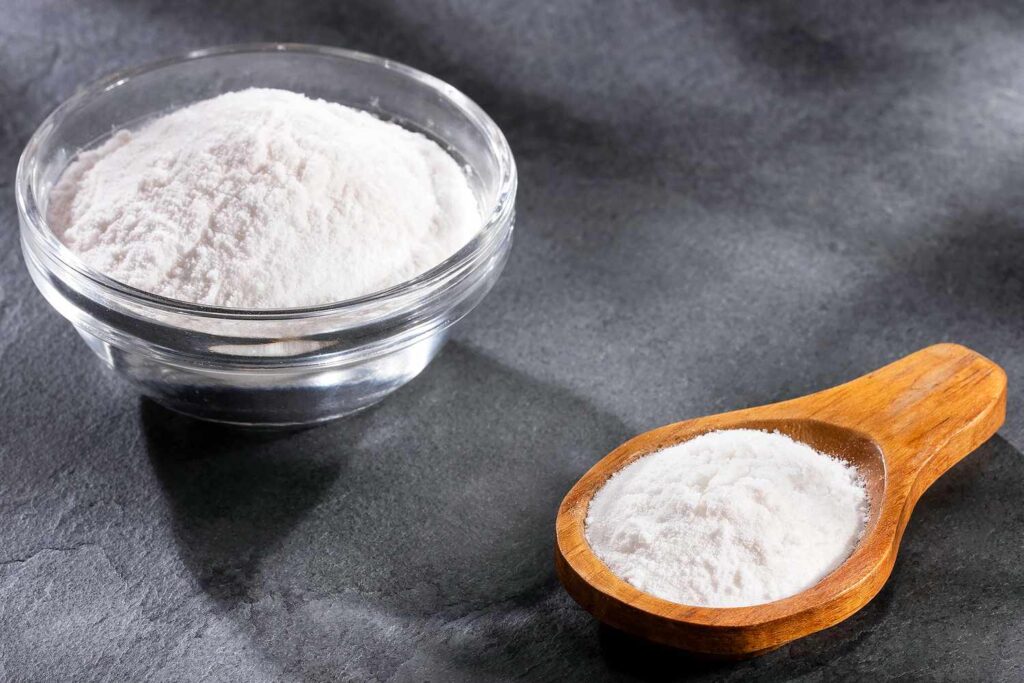
Natural Remedy: Learn How Baking Soda Eases Gum Pain
Baking Soda for Gum Pain: A Guide
Are you in pain due to gum inflammation, sensitivity or infection? Baking soda can provide a natural remedy that is easy to prepare and apply. Read on to learn more about the advantages of using baking soda for gum pain, as well as how best to use it.
Background on Gum Pain Relief
Gum pain can be caused by a number of different things, such as irritation from brushing or flossing, infection, gingivitis, or even cavities. The severity of the pain can range from mild to severe and can cause a lot of discomfort. It can be difficult at times to know what the best solution is for treating gum pain.
More traditional methods of relief for gum pain could include using an over-the-counter pain reliever or an antiseptic rinse. While these methods are effective, they can be costly and may contain harsh chemicals.
Fortunately, there is an alternative solution for those looking to get quick and natural relief from gum pain: baking soda. This option offers a safe and cost-efficient way to reduce the pain and irritation caused by gum pain without having to buy expensive medicines.

The Benefits of Baking Soda for Gum Pain Relief
Sesame seed-sized grains of baking soda, also known as sodium bicarbonate, have been known to provide quick and natural relief from gum pain without the need for over-the-counter medicines. It is a common pantry item, safe for both adults and children, that can act as an antacid and anti-inflammatory agent.
Baking soda can help soothe the area of pain and reduce swelling, making it easier to eat, speak and smile. It has a naturally neutral pH which helps balance the acidic levels in the mouth, which can be the underlying cause of dental pain. Additionally, unpleasant tastes caused by gum infection can be mitigated when using baking soda as a remedy.
When to Use Baking Soda for Gum Pain
Baking soda may offer temporary relief from gum pain, so it is important to understand when and how often you should use it. If used too frequently, it can lead to further damage, so it needs to be used alongside other treatments for maximum benefit.
To get the most out of baking soda, it should only be used when there is a noticeable amount of gum pain or inflammation. It is not recommended to use baking soda as a preventative measure or before discomfort has set in. When there is pain, baking soda can provide quick relief.
Baking soda should not be used more than twice per day. Over-use can cause irritation and lead to further gum problems. It should also be applied shortly after pain isfelt. The sooner it is applied, the more likely it is to reduce discomfort.

Preparing Baking Soda for Use
Baking soda is a common household item and is relatively easy to prepare for use as a gum pain relief. It’s important to follow these few steps to ensure that you are using the best form of baking soda for your needs.
- Purchase baking soda in either powder or crystal granular form. Both are effective, although crystalline granular baking soda may be easier to apply.
- Mix baking soda with a small amount of warm water to create a paste-like consistency. Be sure not to add too much water, as this will reduce the effectiveness of the paste.
- Test the paste on the back of your hand before applying to the affected area. This will help you to determine the temperature and texture.
Once the baking soda has been properly prepared, it is ready for application to the affected area. However, it is still important to keep in mind the safety guidelines outlined in this guide when using baking soda for relief.
Directions on Application
Using baking soda to relieve gum pain is simple. There are two methods – either directly applying it or creating an oral rinse – and both options provide relief.
Direct Application
To use baking soda directly, start by dampening a cotton swab and dipping it into baking soda. Gently dab the baking soda on the area of the gums that is causing discomfort. This should provide quick relief.
Oral Rinse
Creating an oral rinse with baking soda is just as easy. Start by mixing one teaspoon of baking soda with a cup of warm water. Mix until the baking soda is dissolved and use it as a mouthwash. Swish the solution around your mouth for 15-30 seconds before spitting it out.
Tips to Maximize Relief
- For both methods, make sure not to swallow the baking soda.
- Apply or consume the baking soda at least twice daily for maximum results.
- Gently dab the cotton swab onto the affected area; pressing too hard can cause further irritation.
- When creating an oral rinse, mix the baking soda with warm water as this will help provide quicker relief.
Experiences with Baking Soda
For many people, the most effective way to determine whether a solution works for them is to look for experiences from others who have tried it. There are countless reviews and testimonies from people who have used baking soda for gum pain relief and swear by its effectiveness. We’ve searched through these to provide you with some of the most useful advice from real users.
- One user recommends starting with a teaspoon of baking soda and seeing how you respond to it, before gradually increasing the amount until you find the amount that works for you.
- Another user suggests using baking soda with a bit of water to form a paste and then applying it to the gum. This helps the baking soda stick to the gums and increases its effectiveness.
- A third user suggests using a toothbrush or cotton swab to apply the baking soda in to the most painful areas.
- Finally, some users have suggested leaving the baking soda on your gums for 15 minutes or so to enjoy the full effect before rinsing it off.
The reviews and experiences of real users provide invaluable information about how to use baking soda for relief. It is important to recognize that everyone responds differently depending on the severity of their gum pains, and the amount of baking soda needed may vary from person to person. After reading through the experiences of real users, you should be able to discover the best usage for relieving your gum pain.
Enhancing Relief from Baking Soda
Baking soda is an excellent remedy for gum pain, but many people find that it works even better when certain precautions are taken. Here are some tips for getting the most out of baking soda:
- Dissolve the baking soda in water before application. This helps the baking soda adhere better to the affected area, leading to increased relief.
- Limit the application to no more than two to three times per day. Overuse can lead to further irritation.
- Mix a bit of salt into the baking soda solution if you experience especially strong gum pain.
- Allow the baking soda to sit on the affected area for 5-10 minutes before gently rinsing with cool water.
- Gently brush your teeth using a soft-bristled toothbrush after each application.
- For added relief, try combining equal parts warm water, hydrogen peroxide, and baking soda.
By following these tips, you should be able to maximize the effectiveness of baking soda for gum pain relief.
Alternatives to Baking Soda
When dealing with gum pain, baking soda may not be the only remedy to consider. There are several other solutions that can provide relief, some of which might be more accessible or suitable for your particular situation.
One alternative to baking soda is salt water. You can either dissolve a tablespoon of salt in warm water, mix it, and then use it as a gargle, or directly apply the mixture to your affected area. Salt water can help reduce inflammation and also aid in cleansing the affected area.
Another potential solution is hydrogen peroxide. This option can be used for thorough cleaning and helping to reduce inflammation. It is important to note that hydrogen peroxide should be used with caution and in appropriate amounts based on your specific needs.
A third alternative to baking soda is essential oils. Essential oils such as clove oil, peppermint oil, and tea tree oil have natural antiseptic and pain-reducing properties. To use this method, you can simply mix a few drops of essential oil in warm water and use it to rinse your mouth or directly apply the mixture to the affected area.
It is important to note that while these alternatives may provide beneficial relief to gum pain, they may not be as effective as baking soda. Baking soda has proven to be an effective remedy for gum pain on multiple occasions, and its ability to provide quick and natural relief is unparalleled. If you are looking for immediate results, baking soda is likely the best option.
Common Mistakes with Baking Soda Application
Baking soda can be an incredibly effective and fast acting remedy to alleviate gum pain, however, it is important to understand the mistakes that should be avoided when applying baking soda. Taking proper precautions can ensure maximum relief from discomfort.
The most common mistake made when applying baking soda to the gums is mixing it into a paste too quickly. Baking soda can be quite abrasive and needs to be dissolved in water first so that it doesn’t irritate the gums further. If it is not properly dissolved, it can cause further sensitivity and even damage the gums, so always ensure to dissolve it in water first.
Another common mistake is applying too much baking soda or doing it too often. While it may seem that more is better, it can actually do more harm than good if used excessively. Baking soda is a temporary relief and should only be used when necessary and always in moderate doses.
Lastly, it is essential to avoid applying baking soda directly onto the gums. Adding water and properly dissolving the baking soda will help create a slurry, which can be dabbed gently onto the problem area. Avoiding contact with the gums will minimize any potential irritation.
Preventative Measures to Reduce Need for Baking Soda
While baking soda can provide quick relief to gum pain, it’s best to take the necessary steps to try and reduce the need for baking soda in the first place. There are a few easy measures that anyone can take to cut down the risk of gum pain.
- Brush your teeth thoroughly and regularly, at least twice a day.
- Floss regularly to remove any debris between teeth.
- Try to avoid sugary foods and drinks, as this can cause bacteria to produce acid that attacks the enamel of the teeth.
- Visit your dentist for routine check-ups and cleanings to help prevent inflammation and infection.
- Drink plenty of water to keep your mouth hydrated and clean.
By following these steps, you can reduce the risk of gum pain and keep your teeth looking and feeling healthy.
Why Baking Soda is an Ideal Solution for Gum Pain
Gum pain can be a nuisance. It’s uncomfortable and often difficult to get rid of without the help of over-the-counter medicine. Fortunately, baking soda has been used as a natural remedy for gum pain relief for many years. This article will summarize why baking soda is a great option, including its benefits and ideal usage, as well as other alternatives and preventative measures.
Baking soda has been proven to provide quick relief from gum pain. It’s natural, which means there are few side effects. In addition to relieving discomfort, baking soda can also balance the pH levels in your mouth, leading to healthier gums in the long term. Proper application and usage of baking soda can reduce the need for over-the counter medication and provide effective relief.
To maximize the effectiveness of baking soda when treating gum pain, it should be used correctly. Preparing baking soda correctly with water or other liquids is essential. The mixture should then be applied directly to the affected area and allowed to sit for several minutes before being rinsed off. For best results, it should be used twice a day for at least a week.
Although baking soda can be an effective tool for alleviating gum pain, it’s important to know when to use it and when to seek other relief options. Baking soda should not be used for prolonged periods of time or if symptoms of infection are present. Alternatives such as saltwater rinse and hydrogen peroxide can be used in place of baking soda.
Lastly, there are steps you can take in order to avoid the need for baking soda altogether. Regular brushing and flossing, as well as tongue scraping and reducing the consumption of sugary foods and drinks, can reduce your chances of having gum pain. If the pain is persistent, consult your dentist for further guidance.
In conclusion, baking soda is a great option for providing temporary relief from gum pain. When used properly, it can effectively reduce discomfort without causing any additional harm. However, it should not be relied upon as a long-term solution and other preventative measures should be taken to minimize the incidence of gum pain.
FAQs on Baking Soda for Gum Pain
- Q: What causes gum pain?
A: Gum pain can be caused by a myriad of factors, such as poor oral hygiene, gingivitis, periodontal disease, abscessed teeth, or tooth decay just to name a few. - Q: What are some common relief solutions to gum pain?
A: Common relief solutions include ibuprofen to reduce inflammation, flossing and brushing to remove food particles, antibiotics to fight infection, and biting down on cold items. - Q: What makes baking soda an effective temporary relief option for gum pain?
A: Baking soda is an all-natural ingredient whose neutralizing properties can help reduce pain and inflammation. Along with its mild antibacterial properties, baking soda helps remove plaque buildup that can cause gum pain. - Q: When and how often should baking soda be used for gum pain?
A: Baking soda should be used no more than once or twice a day for immediate relief. Long term use may cause further damage to the teeth and normal oral hygiene habits should be maintained. - Q: How does one prepare baking soda for application?
A: Baking soda should be mixed with either water or sea salt to create a paste-like consistency before application. This mixture should not be ingested. - Q: What precautions should be taken while using baking soda?
A: Precautions should be taken to ensure that the baking soda is not ingested and the paste is not applied near the eyes or other mucous membranes. In addition, rinsing the mouth with water and flossing afterwards will also help promote maximum relief. - Q: Are there any alternatives to baking soda that can provide relief?
A: Yes, other natural items and remedies can be used, such as clove oil, tea tree oil, and hydrogen peroxide among others. However, these alternatives may not provide the same level of relief as baking soda.
